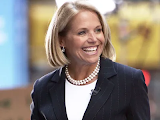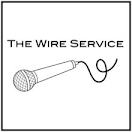Who is Katie Couric?
Katie Couric can easily be recognized as one of NBC's Today show's most notable cohosts, but her career as a journalist goes far beyond that. Couric worked extensively with other major news stations such as ABC, CNN, and CBS. These extensive and admirable positions helped her form the legacy she has today as an American author, journalist, producer, and presenter.
Katie Couric was born on January 7, 1957, in Arlington, Virginia. Couric is also the daughter of a writer and journalist, John Couric.
Couric pursued her undergraduate degree in American studies at the University of Virginia in 1979. Shortly after she graduated, Couric decided to move to Washington D.C. to pursue her career as a journalist and TV host.
Her first job was at ABC News where she served as a desk assistant. Katie mainly worked under anchorman Sam Donaldson as well as some others. A little while later in 1980, Couric began working at the Washington bureau of the Cable News Network, CNN. However, it is worth noting that after watching Couric fill in for an absent news correspondent, a CNN executive said that he never wanted to see Couric on the air again. Despite this criticism, Couric continued to work at CNN locations around the world, most often in the Atlanta base, for the next seven years as a producer and on-air reporter.
Even after years of Couric's hard work and dedication, CNN failed to offer her a full-time job as a reporter. As a result, she returned to Washington in 1987 to take a job as a reporter at an affiliate NBC news station. While at NBC, the then anchor of the Today show, Deborah Norville, left for maternity leave. Couric ended up serving as her co-anchor alongside Bryant Gumbel and eventually replaced Norville in 1991. Over the next three years, Couric covered major stories that included the U.S. Invasion of Panama, the Persian Gulf War, and others all from her newly-incorporated position on NBC's Today show.
At this point in her life, Couric had served at all of the major American news stations at the time: ABC, CNN, and NBC. Her success with the Today show flourished into the 1990s and in the summer of 1998, she signed a four-year-long contract extension with the NBC news program. Couric's salary and rankings were elevating her with some of the most popular TV personalities such as Dan Rather of CBS, Tom Brokaw of NBC, and Diane Sawyer of ABC.
Unfortunately, that same year, 1998, Katie Couric's husband of ten years, Jay Monahan, who was a lawyer based in Washington, passed away due to a six-month battle with colon cancer at the age of 42.
Following her husband's early death, Couric decided to launch a campaign in March of 2000, titled the National Colorectal Cancer Research Alliance to encourage preventative testing and research. To
raise more awareness, Couric started a two-week-long TV series and even underwent an on-air colonoscopy herself to make her viewers understand the importance of testing. By the end of the campaign's first year, it had raised more than 10 million dollars for colon cancer awareness. In addition, Couric also underwent an on-air mammogram to raise awareness for breast cancer.
raise more awareness, Couric started a two-week-long TV series and even underwent an on-air colonoscopy herself to make her viewers understand the importance of testing. By the end of the campaign's first year, it had raised more than 10 million dollars for colon cancer awareness. In addition, Couric also underwent an on-air mammogram to raise awareness for breast cancer.
In the midst of her campaign in 2000, Couric wrote and published a children's book, The Brand New Kid. Her book reached the top of the New York Times best-seller children's picture book for three weeks. In addition, Couric published another book in 2004, Blue Ribbon Day, and another in 2011, The Best Advice I Ever Got: Lessons from Extraordinary Lives which achieved a best-selling position as well.
In January of 2002, Couric again signed a contract with NBC for another 4 years. This contract gave Couric the opportunity to keep the reins of Today and explore other available possibilities within the network. This decision in Couric's career led her to be the world's highest-paid TV personality.
Katie Couric continued to make television history in 2006 when she left the Today show to sign a deal to become the first woman to anchor CBS Evening News solo. Couric was now the first woman to solo anchor a weeknight news network broadcast. In addition to this, Couric also contributed to the newsmagazine, 60 Minutes, and anchored specials for CBS.
Couric's first solo debut on CBS was on September 5, 2006, which was the first evening show to be broadcasted simultaneously on the internet and local radio stations. Roughly 13.6 million viewers tuned in to listen or watch. Couric's newfound position brought in the highest ratings for the show since February of 1998. After a long and successful career with CBS, in May of 2011, Couric delivered her last broadcast of the Evening News.
After her time at CBS, Couric signed a deal with ABC in the following month of June 2011. The following year, Couric began hosting her own talk show titled Katie which debuted on September 10, 2012. Her show was the most-watched inaugural show on daytime television, but interest soon depleted and the show was sadly canceled after the second season.
Two years later in 2014, Couric took on a new position as the global news anchor for Yahoo. This role gave her the opportunity to fulfill traditional anchor responsibilities that included reporting and conducting interviews and hosting special series for the network such as World 3.0 and Now I Get It. It was officially announced in 2015 that Couric agreed to terms on a deal with the internet giant.
Today, Katie Couric now runs her own media company, Katie Couric Media, among other things like her podcast, Next Question with Katie Couric, and a daily newsletter, Wake-Up Call. Couric has also appeared in documentaries about American news.
Couric's extensive success has earned her multiple rewards and recognition for her television reporting. A few of the most notable ones include:
- Six Emmy awards from 1994 to 2004 for "Outstanding Special Cast Program"
- Peabody Award in 2002 for her colon cancer awareness series
- Edward R. Murrow Award for best newscast in 2008 and 2009
- Grand Allen Award in 2009 for "Outstanding Anchor"
- Emmy in 2010 for her extensive work with CBS
& many more.
Katie Couric is truly a modern journalism hero who used her large media platforms to bring awareness to issues that affected her, as well as others, to advocate for change. Couric is easily described as kind and caring and embodies her devotion to these forms of awareness in her everyday life. Couric has an inspiring story that shows how as journalists, while our paths may shift and change throughout our careers, we still can have a major impact on the world.
Even today after her years of extensive television work, Katie Couric is still using her voice to spread the truth of what she reports. I believe that Couric's story is inspiring and comforting to any journalist because even despite her career and personal struggles, she persevered and worked her way to the top. Katie Couric is not only an inspiring journalistic model but an inspiring personal model because of her kindness and devotion to issues that matter.
To be successful, you have to be brave enough to try and fail.
- Katie Couric


















